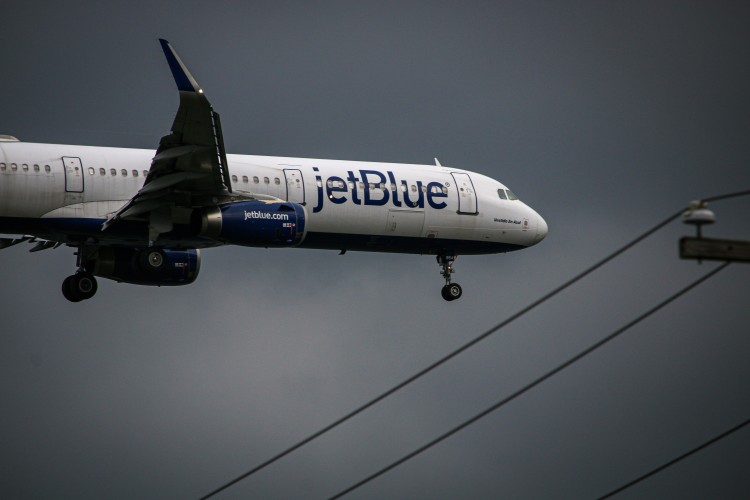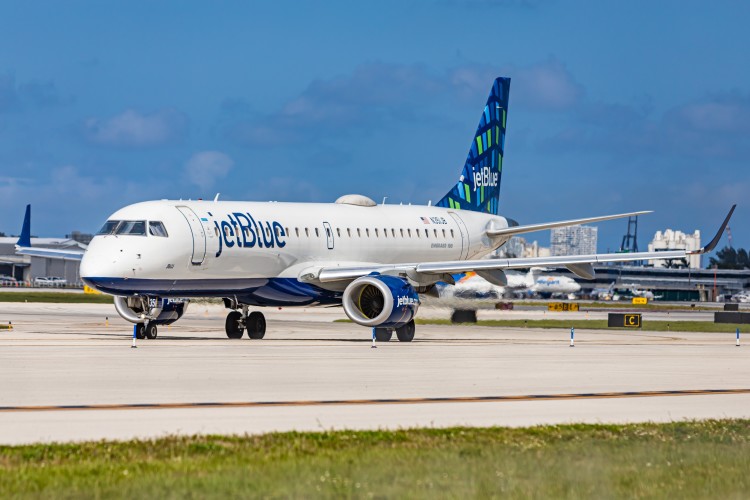JetBlue Has Agreed To Buy SAF: The Future Of Aviation Fuel
JetBlue Airways Corp

Since September 2022, JetBlue has been working on finding alternative fuel sources. Then, by early December 2022, JetBlue agreed to purchase 92 million gallons of sustainable aviation fuel (SAF), a purchase made through Fidelis New Energy, an energy transition company built to decarbonize industries through renewable fuels and low-carbon intensity products. The SAF that’s purchased is expected to be delivered over a five-year term, beginning in 2025.
This is great news as the aviation industry has for years been dancing around the idea of sustainable aviation fuel. Early in its creation, SAF was identified as a key factor in reducing greenhouse gas emissions across this industry, and the primary barrier to entry was that the adoption process was slow.
How Far SAF Has Come
In 2020, Finnish company Neste began supplying fuel to three major US airlines with biofuel out of San Francisco. American Airlines and Alaska Airlines purchased those fuels. Some other developments include:
KLM partnered with Neste and agreed to 75,000 tonnes of biofuel a year starting in 2022.
United airlines ran trial biofuels in 2019 and agreed to purchase 10 million gallons of SAF. United is still one of the leading airlines for SAF as it incorporated in its flights since 2016
Delta Air Lines also agreed to 10 million gallons per year in 2019.
Although developments over the years have been significant, adaptation has been a slow and gradual process. Just last year, it was reported that SAF technology wasn’t economically sustainable. SAF cost airlines four times the price of usual jet fuel and it only made up less than one percent of available fuel in the market.
In other words, for years, SAF was designed as a supplemental fuel for airlines. This makes sense, given how airlines weren’t buying exceedingly large amounts of it. It’s for this reason that JetBlue’s purchase of 92 million gallons is so significant. It’s the largest purchase made thus far, right next to Virgin Atlantic’s purchase of 70 million gallons.
It’s A Big Leap, But Things Could Be Better
JetBlue announced last year that their goal was to have 10% of their jet fuel to consist of blended SAF by 2030 and to reach net zero carbon emissions by 2040. This is advantageous and very possible given how Fidelis is an expansive company.
Fidelis has a fuel station they call Grön Fuels GigaSystem, located in Louisiana. The facility uses various existing and emerging low-carbon-intensity feedstocks to design a negative lifecycle carbon intensity. This facility is the largest and most efficient renewable fuels facility in North America with expected production to be 1 billion gallons per year of SAF, renewable diesel, and other low-carbon products.
Overall, it’s very possible that JetBlue could become net zero faster than by 2040. Already, they have a history of partnering with other companies for alternative fuel sources. Neste was a company that JetBlue initially bought fuel from, for example.
But even with this progress, there is always room for improvement. There are other alternatives that could be made that airlines can adopt. Taking a page from France, one solution can be to ban short-haul domestic flights, encouraging travellers to use alternative methods of transportation.
And, even though removing those flights would cut into profits, this would also free up more airline staff for longer and more profitable flights. Already we know airlines have been giving out delays due to a lack of staff or room on planes. While there are several reasons, a lack of available staff can strain an airline’s flight plan.
Beyond that, it would also reduce fuel needs, ensuring that SAF could be used for longer flights.
We Can Also Look At How We Travel
It’s a good thing some airlines are adopting real changes. These drive an impact compared to previous attempts airlines have made with being more sustainable. A good example is carbon offset initiatives, which often cause more problems than they’re worth. That being said, it’s also worth considering our own travel habits.
Do you absolutely need to take a plane to travel a large distance? Or would you be able to take a long road trip to get to where you need to go? While flights are definitely more convenient and becoming progressively greener, they still offer much higher emissions than any other method of transportation right now.
As usual, while corporations are making changes, it is up to us to incentivise those changes and to adapt to change, ourselves, as well.
Follow the ESG performance of aviation sector companies in our growing listing.




